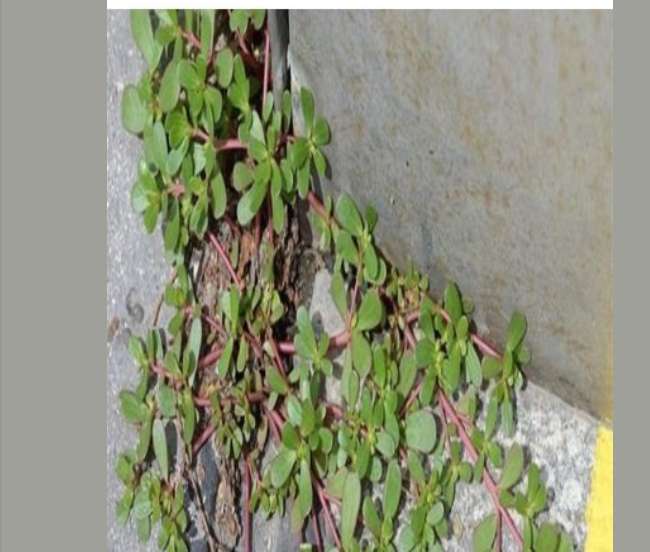Purslane is often referred to as a common weed, and most gardeners are just throw them away, but they actually have a better use. Eating the leaves have actually been proven to have amazing health benefits, so next time you see a bunch of weeds in your garden, try putting the naturally grown plant to some good use. here’s why you should tare eating purslane.

Grows everywhere. The seeds of the purslane are so strong that a single plant can live over 25 years, so it’s no surprise that it boosts your immune system, and improves your overall health.
Purslane nutrition facts
Soft, succulent purslane leaves have more omega-3 fatty acids than in some of the fish oils. If you are a vegetarian and pledge to avoid all forms of animal products, then here is the answer! Go for this healthy dark-green leafy vegetable and soon you will forget fish!
Purslane is native to Indian sub-continent and now distributed widely across the continents but actually as a wild weed. There exist varieties of pusley with variation in leaf size, thickness, and leaf arrangement and pigment distribution. This hardy herb plant requires relatively less water and soil nutrients and grows well sunny sunny climates. The plant grows up to 12-15 cm in height as a low-lying spread. Purslane seeds, appear like black tea powder granules, are often used to make some herbal drinks.
Health benefits of Purslane
This wonderful green leafy vegetable is very low in calories (just 16 kcal/100g) and fats; nonetheless, it is rich in dietary fiber, vitamins, and minerals.
Additionally, it loaded with omega-3 fatty acids, and has the most vitamin A of all green leafy vegetables, which helps protect you from several cancers.
It is also great on sandwiches and salads, and its high level of protein will help you build strength.
Additionally, Children who consume this plant are less likely to develop symptoms of ADHD, Autism, and other developmental disorders.
Fresh leaves contain surprisingly more omega-3 fatty acids (a-linolenic acid) than any other leafy vegetable plant. 100 grams of fresh purslane leaves provide about 350 mg of alpha-linolenic acid. Research studies show that consumption of foods rich in omega-3 fatty acids may reduce the risk of coronary heart disease, stroke, and help prevent the development of ADHD, autism, and other developmental differences in children.
It is an excellent source of Vitamin A, one of the highest among green leafy vegetables. Vitamin A is a known powerful natural antioxidant and an essential vitamin for vision. it is also required to maintain healthy mucusa and skin. Consumption of natural vegetables and fruits rich in vitamin A is known to help to protect from lung and oral cavity cancers. Purslane is also a rich source of vitamin C, and some B-complex vitamins like riboflavin, niacin, pyridoxine and carotenoids, as well as dietary minerals, such as iron, magnesium, calcium, potassium, and manganese.
Purslane is also a rich source of vitamin C, and some B-complex vitamins like riboflavin, niacin, pyridoxine and carotenoids, as well as dietary minerals, such as iron, magnesium, calcium, potassium, and manganese.
Purslane are full of essential antioxidants, and vitamins that are essential to proper health. It is also full of calcium, iron, which help strengthen bones.
Content created and supplied by: Undergroundnewsgh (via Opera
News )
